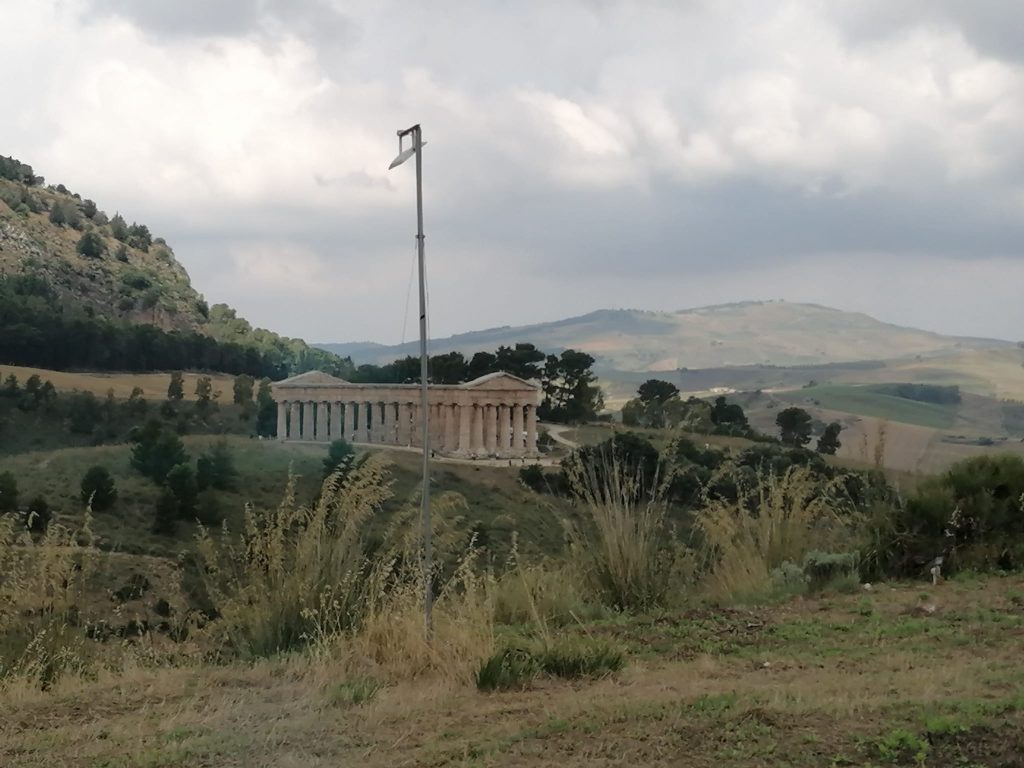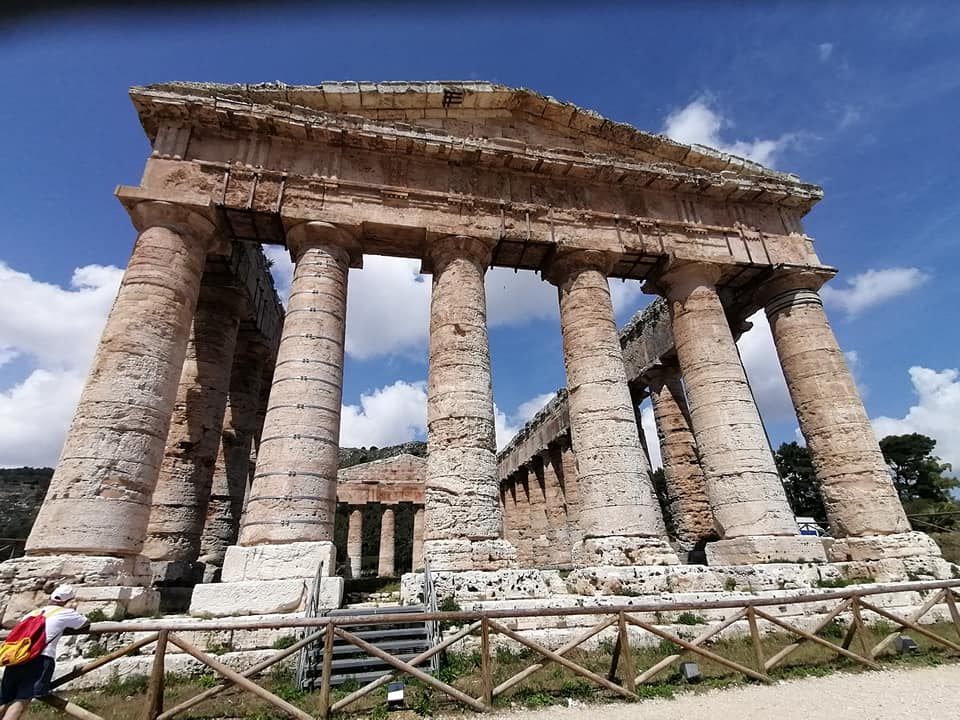It reopens later twenty years il Temple of Segesta, ancient Elymian city located in the northwestern part of Sicily, in the province of Trapani with a fascinating history. It will finally be possible to enter the majestic sacred building and breathe a magical atmosphere as well as enjoy a breathtaking view. Inside the temple there is also one of Elyma installations di Gandolfo Gabriel David, centered on the sense of the sacred and the relationship with nature.
Segesta the most important city of the Elymians
Segesta it is the most important of the Elymian cities. According to Thucydides it was founded by the survivors of the Trojan War driven by Aeneas, which, before arriving at Roma, left you a conspicuous colony of his fellow citizens, including his old father. It was governed by the Elimi, an extremely refined people and for this subject to the dominant influences of the Sicilian Greek culture, but not in a subordinate position, like all the so-called indigenous populations of Sicily. The Elimi maintained relations with the neighboring civilizations, but always trying to have an autonomy which led them to contrast with the Greeks in alliance with the Punics and with the latter in alliance with Rome. The city became one of the most important centers of the Mediterranean.
His power and wealth inevitably brought Segesta to collide with neighboring cities and, in particular, with Selinunte. Cities played a key role in the Peloponnesian War which he saw in opposition Sparta and Athens. Selinunte was supported by Syracuse, a Spartan ally; Segesta he also asked for help Carthaginians. These destroyed Selinunte but for revenge, Dionysius of Syracuse destroyed Mothia. Subsequently, Agathocles of Syracuse destroyed the city.

The temple of Segesta, one of the largest and best preserved
Il Temple of Segesta is a building of ancient Greece dating back to the fifth century BC which stands on a hill with a breathtaking view Calatafimi in Sicilia. Today it is located within the Archaeological Park of Segesta, Calatafimi (TP) and includes the theatre, temple and sanctuary in the Mango district.
It is one of the few monuments that are preserved perfectly intact. It rises majestically on a plateau that overlooks a valley where a river flows.
It is a Doric temple built between 430-420 BC; it has fourteen columns on the long sides and six on the short sides. Various elements show that the works were never completed. There are no decorations. It is intact in its original structure, but without the cover of the cell (naos) and finishing touches. The lack of the cell and the roof have caused scholars to debate for a long time. Some argue that the temple simply remained incomplete. Others instead think that the Elymians had a different religion and different habits. The building is one of the most fascinating and mysterious temples in the Magna Grecia.

The reopening
From 7 July the interior of the Doric temple of Segesta can be visited again, until now admirable only from the outside for safety reasons.
The city of Segesta, symbol of Sicilian multiculturalism, is experiencing a new season of discoveries, due to scientific excavationsi which aim to restore an overall image of the city. Recent discoveries in the area of the so-called Casa del Navarca, in the southern acropolis of the settlement, have brought to light the ancient paved road that cut through Segesta and the decorated altar from the Hellenistic period.
This is enriched by the theatrical season set up for years in the theater and the new use of the interior of the temple with an art installation and exhibition.
The exhibition
Inside the temple there is also one of Elyma installations by Gandolfo Gabriele David, centered on the sense of the sacred and the relationship with nature. The exhibition, curated by the art historian Lori Adragna and by the director of the Segesta Archaeological Park, Luigi Biondo, organized by WorldExhibitions for the Archaeological Park, winds along a path punctuated by the works and enriched by a section curated by archaeologists Maria Cecilia Parra and Chiara Michelini, engaged for years in the archaeological investigations of the Sicilian sites of Segesta and Entella.
The exhibition will be open until May 19, 2024.
Also expected evening openings of the temple the 14, 15 and 16 July, 1, 2 and 3 September, from 20pm to midnight. The temple will also remain open during the evenings from 21 to 23 July and from 28 July to 27 August, according to the programming respectively of the KFestival – literature festival and the Segesta Teatro Festival.
For information click on: https://www.parcodisegesta.com/home/vivere/storia.html and https://www.regione.sicilia.it/.
A better use of this archaeological treasure
We know that Italy is a wonderful country, made up of naturalistic, artistic and architectural beauties that have always enchanted and inspired the whole world, thanks also to cultures and traditions that have their roots in distant centuries and which continue to survive. All this enriches and makes it valuable the heritage of our country which every day is visited and appreciated by tourists from all over the world.
The theater of Segesta together with the archaeological area constitutes one of the most precious archaeological treasures of Italy. That's why you need to invest in Archaeological excavations and in the enrichment of the cultural offer accessible to the public.
Photo of St. Portal





